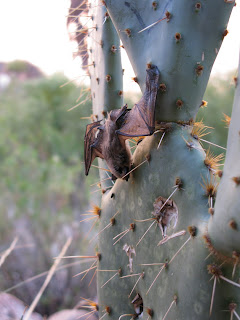Last year was the first full summer in our new house and I was very excited to finally have the sun and yard space for vegetable gardening. I don't have a lot of experience in vegetable gardening, but having worked as a horticulturist with ornamentals for almost 6 years made me believe that I would be lucky in this endeavor. Mother Nature (we have words occasionally) kindly reminded me that I was getting a big head and plagued my garden with pests and crop failure galore! Regardless, I learned some lessons last year and this post is about one of those lessons.
Summer squash/zucchini is a favorite in this household, so it was a must on the ever growing garden list. Last summer, I planted three seeds around Mother's Day and watched these beauties take off....seriously, I wish I had taken a picture....they were gorgeous! We harvested about 3-4 squash, made some zucchini bread, baked zucchini with tomato sauce, fried zucchini...we were in heaven and excited to get oodles more to share with family and friends and more to shred and freeze for future zucchini bread cravings. I so wanted to be that neighbor that brought baskets of vegetables over to share because our refrigerator was overflowing from such a good harvest. I realize now "baskets" may have been setting the bar a bit high....but, a few zucchinis here and there to share would have been nice. Ok, so you've guessed it...I had no zucchini's to share....
One day in July, I looked out the window and one of my beautiful zucchini plants was wilting. My husband automatically assumed it needed water. I thought maybe it was a temporary reaction to the heat and humidity of the day. Long story short, this huge, once prolific looking zucchini plant was not looking any better as the week went on and his friends quickly joined him. I had an 11 month old at the time, so I took more of the sit and wait method rather than pouring time and energy into figuring out what was wrong with the plants.....it HAD to be the hot and humid week we were experiencing because zucchini's are one of the easiest vegetables to grow! After all, I took a quick look at the plants and could not see anything obvious to me ( I should have looked a little harder).
After his friends followed suit, I did finally get onto google to research what might be going on and hoped for some sort of advice to get these plants back on track. I had noticed some larger brown bugs around the plant and with my biology background knew they were what we call "true bugs"....at least that is what we called them... names always seem to change. I was able to narrow my bug down with the help of my basic bug knowledge AND google images. I was dealing with a squash bug! But how could this insect create such damage on such healthy plants??? It didn't make sense to me based on what I was reading, so I kept looking.....
 |
| Squash Bug |
As I looked at my plants closer, I also noticed some yellowy sawdust type stuff at the base of their stems. Upon lifting one of my zucchini stems to get a better look, the stem easily snapped right off....back to google! Turns out these plants were doomed from early on. Before they even were large enough to flower and produce fruit, my zucchini had a little killer living inside their main stems that slowly sucked the life out of them. The squash bugs were not the main killer, but they definitely did not help the situation.
.
My zucchinis killer was the squash vine borer. The squash vine borer moth lays eggs at the base of plants (winter squash, summer, squash and cucumbers are some of their targets). When the eggs hatch, the larva burrows into the base of the plant and begins to slowly suck the life out of your zucchini...the worst part??????.....you most likely will not know anything is wrong with your plant until they are big, beautiful, flowering and possibly giving you a few good squash before they wilt and signal you to their ultimate death. Eggs are oval,
flattened, dull-red in color, and 1 mm in diameter.
 |
| Squash Vine Borer moth |
 |
| Squash Borer Larva |
The only good thing to come out of my mass zucchini die off was that I came into this growing season armed with a little more knowledge. I had read somewhere that you could wrap the stems of your zucchini in aluminum foil to prevent the moth from laying her eggs there. Here is a video of the method I am referring to....pretty basic:
http://www.youtube.com/watch?v=HnnJ84W8kyE
Here is a few pictures of MY zucchinis this year and their foil wraps. The foil is wrapped loosely and should fall off as the zucchini grows.
 |
| My zucchini had just gotten their third leaf when I wrapped their stem. |
 |
| I simply put a thin aluminum foil wrap at the base of their stems |
My only apprehension with my gardening this year is that I planted my zucchini in relatively the same spot as last year. When you have a pest outbreak, it is generally a good rule to NOT plant that same plant in the same area the next time.....but I am taking my chances and hopefully do not have to report back that I again was an epic fail at growing one of the easiest vegetables out there! Wish me luck....
Happy Gardening!
Candi



















































